Best acoustic guitar pedals 2025: pedals to transform your tone and boost creativity
Improve and shape your tone with the best acoustic guitar pedals from the likes of Boss, Fishman, MXR & LR Baggs
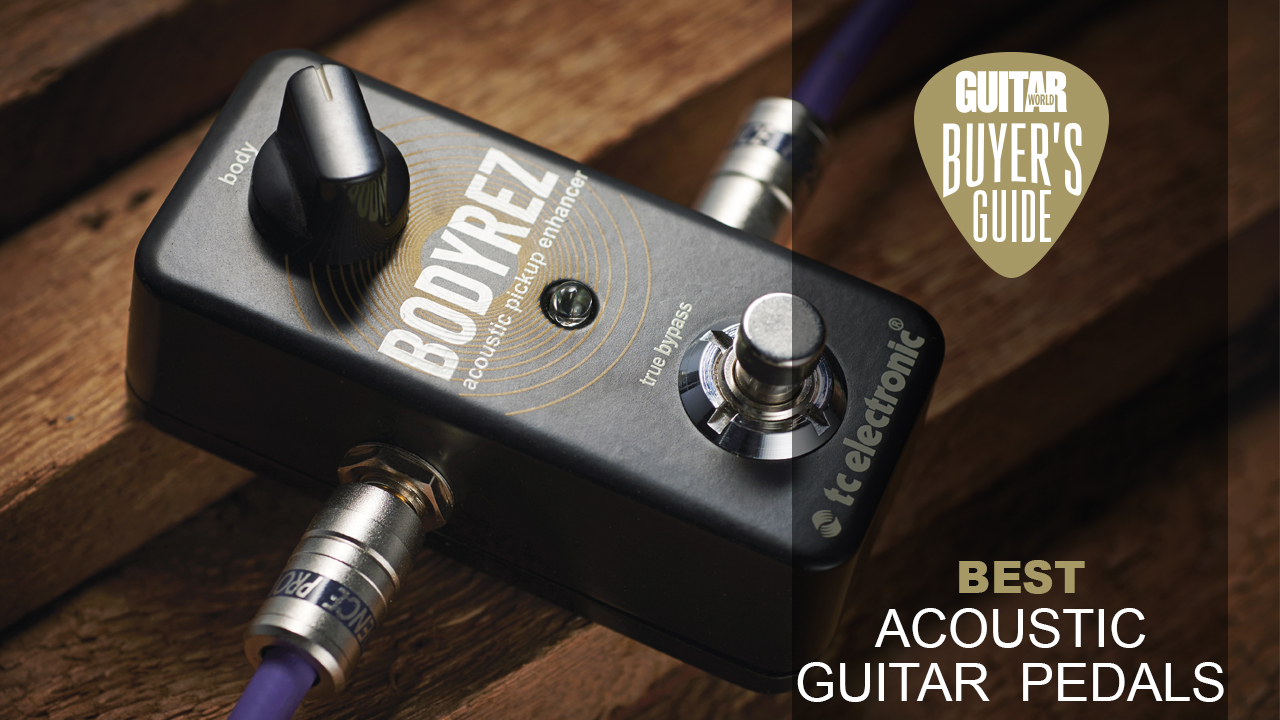
The best acoustic guitar pedals can not only fix some problems associated with plugging in an acoustic instrument, they can drastically enhance how they sound too.
From simple preamps that give you a little more control over the EQ, to all-out effects units that add depth and character, the best acoustic guitar pedals can serve a multitude of purposes.
Whether you’re playing live or recording, having one or two pedals in your set-up can provide flexibility and consistency. You might not be using your own amp, recording interface or PA system – many of the best acoustic guitar pedals allow you to dial in your desired tone so you’ve always got access to your sound.
Reverb pedals allow you to add a natural, spacious element to your tone, whereas delay and chorus pedals can help thicken up your sound.
Other pedals are more practical and deal with signal and feedback issues. There are lots of different options out there, which is why I've created a list of what we think are the best acoustic guitar pedals available right now.
If you want my top pick straight away, I've given it to the LR Baggs Venue DI because it's versatile and jam-packed with features that live acoustic players will love.
If you'd like more information, I've provided a FAQ section below where I dive into more details aboutacoustic guitar pedals.
My top picks

In my opinion, the LR Baggs Venue DI is an essential pedal for live acoustic pedals. It has a DI and useful five-band EQ to dial out unwanted feedback. A solid, no nonsense pedal.

For players on a budget, look no further than the Nux NAP-5 Stageman Floor Acoustic Preamp. It's has 3-band EQ, 60 second looper, DI and preamp with reverb and chorus built in.

The TC Electronic Ditto X2 is a no-frills looper that gives you five minutes of looping time with unlimited overdubs. It lacks some features, but this remains an excellent purchase.
Best overall
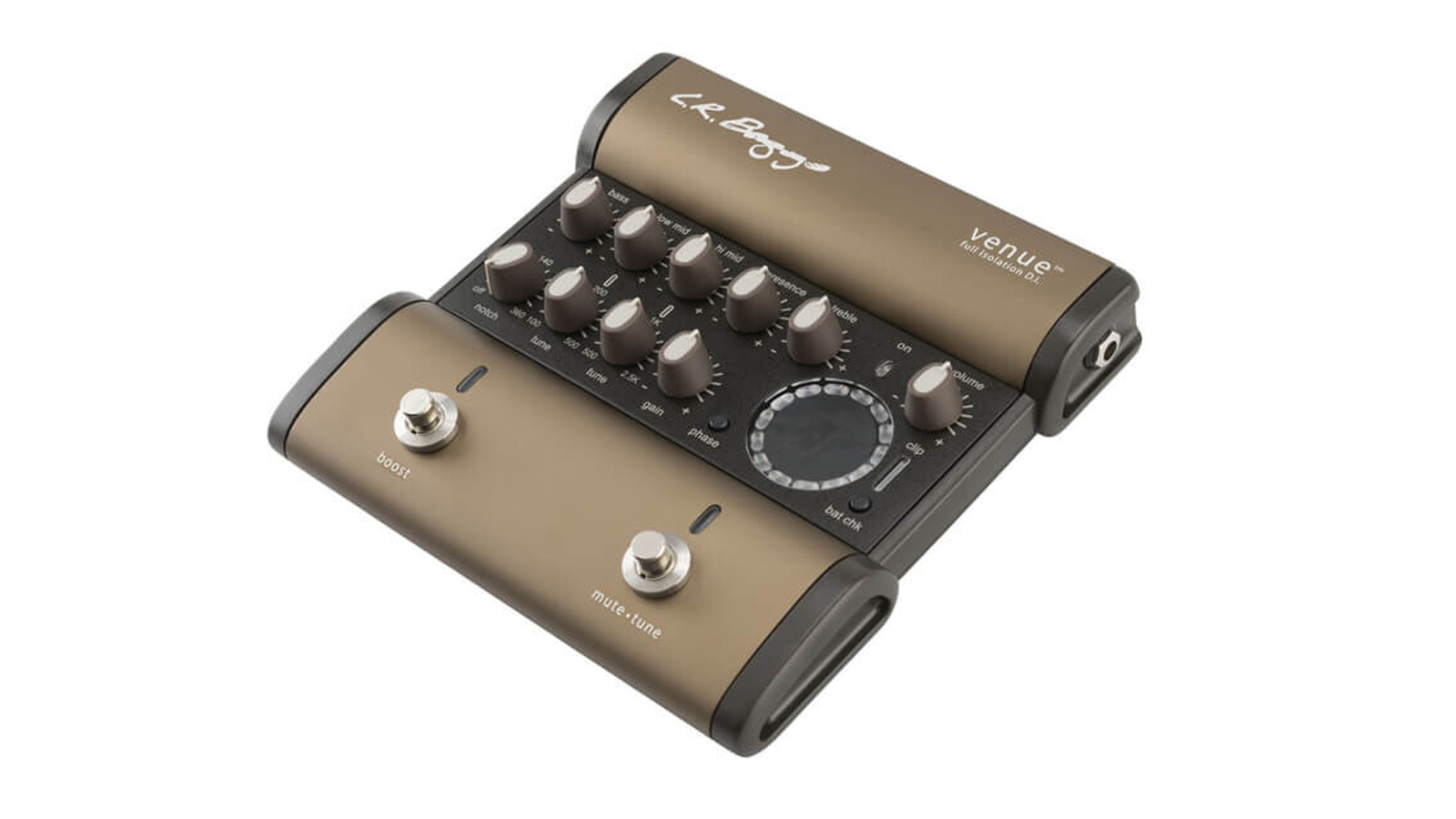
1. LR Baggs Venue DI
Our expert review:
Specifications
Reasons to buy
Reasons to avoid
✅ Buy if you want a versatile pedal for live performances: It might look a little dated, but this pedal packs a lot into its retro stylings. It's versatile and a multi-tool win for live players.
❌ Avoid if you're sticking to a strict budget: The LR Baggs Venue DI is a bit more expensive than some other pedals in this list.
Build quality rating: ★★★★★
Usability rating: ★★★★★
Sounds rating: ★★★★★
Overall: ★★★★★
Performing live as an acoustic player is fraught with potential issues – being agile enough to dodge the missiles the audience is throwing at you is the very least of them. Then as soon as you plug in, your guitar tone abandons you while howling feedback follows you everywhere.
Sounds familiar? Fortunately, there's a whole arsenal of tech that can help in these situations, and good ol' LR Baggs has shoehorned most of it into one very useful little box, the LR Baggs Venue DI.
This highly rated acoustic guitar pedal features a DI to overcome any impedance mismatches, as well as a five-band EQ to recover lost tone or dial out frequencies that are causing feedback. Speaking of which, the Venue also brings a notch filter and a phase switch to the fight.
The preamp provides plenty of adjustable gain for either passive or active pups, and there's a clean boost switch for solos or any other time you need to increase volume. Finally, there's a full chromatic guitar tuner with footswitch mute.
Best looper

Specifications
Reasons to buy
Reasons to avoid
✅ Buy if you want a great-sounding looper: Intuitive to use and full of excellent effects modes, the X2 offers great value for money.
❌ Avoid if you want a more fully-featured looper: The X2 does lack some of the bells and whistles you'll find on more expensive pedals.
Build quality rating: ★★★★
Usability rating: ★★★★½
Sounds rating: ★★★★
Overall: ★★★★
Loopers are great fun and make very useful practice tools. However, they can also feel so complex that using them just becomes too much like hard work, leaving them sitting in the corner to collect dust.
In my opinion, the Ditto X2 offers up the best balance of usability and functionality. There are no digital displays or hidden menus on this acoustic guitar pedal, so every feature is just a twist, flick or click away.
You get five minutes of looping time, with unlimited overdubs and undo/redo, and your loops will be stored even when the Ditto has been turned off. There's a dedicated stop-switch too, to help you perform with precision – recommended with a looper.
Reverse and ½ Speed are the only two onboard effects, but the Ditto X2 can also be fed backing tracks from a computer and vice versa, so there's plenty of scope for creative experimentation.

"For live use, a looper with a dedicated stop button is essential. The Ditto is solid, intuitive and straightforward to use, even on a dark stage."
Read more: TC Electronic Ditto X2 Looper pedal review
Best reverb
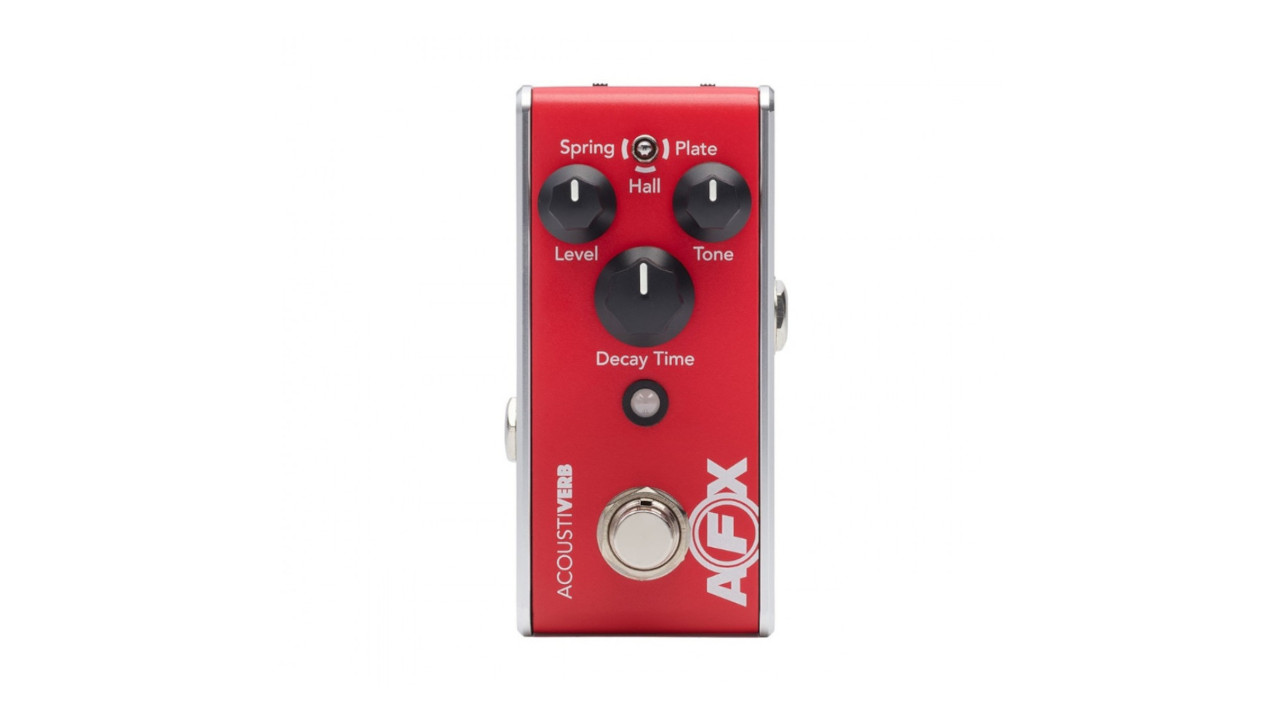
3. Fishman AFX Acoustiverb
Our expert review:
Specifications
Reasons to buy
Reasons to avoid
✅ Buy if you want a flexible reverb pedal for a great price: The Acoustiverb offers three levels of reverb that can be easily adjusted. Add in the price and this is a great option.
❌ Avoid if you want more than just reverb: With reverb only on the Acoustiverb, you may want to look elsewhere for more playing options.
Build quality rating: ★★★★½
Usability rating: ★★★★½
Sounds rating: ★★★★½
Overall: ★★★★½
If you’re after a quality, versatile and solid reverb pedal for your acoustic guitar, then this compact little offering from Fishman might be exactly what you seek.
Armed with three different reverbs to choose from – plate, spring and hall – you can dial in whatever reverb tone you’re after. You can then adjust the level of the reverb, decay time and how bright or warm the effect sounds. What’s particularly nice is that the level adjusts the reverb in parallel to your signal so that you still get plenty of clarity and acoustic definition.
You can use either a regular jack for regular operation or a TRS cable to create a different audio path alongside the tip/ring switch. You’ve also got the option of running it in true bypass or buffered mode.
Best delay
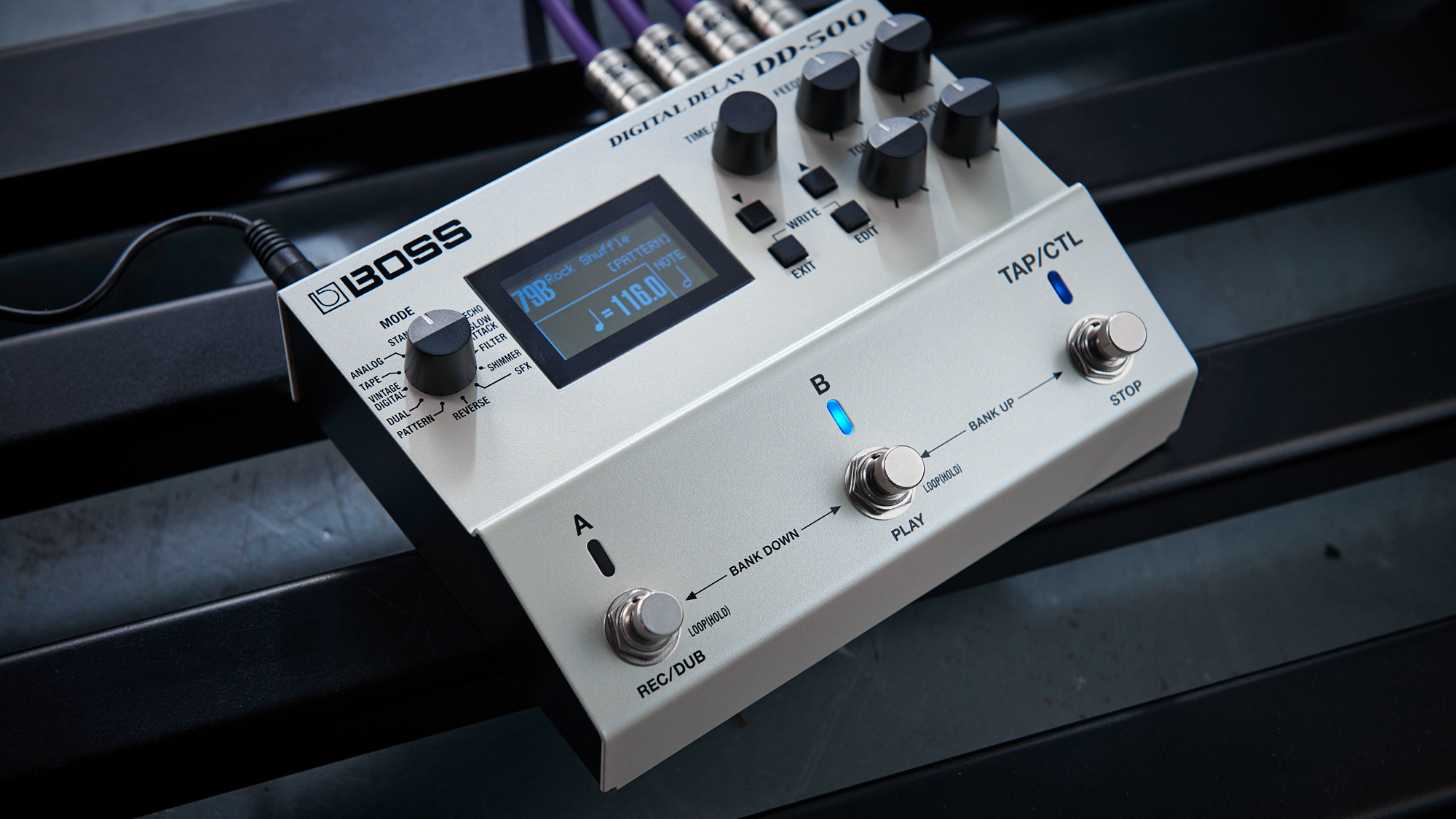
4. Boss DD-500
Our expert review:
Specifications
Reasons to buy
Reasons to avoid
✅ Buy if you want a powerful pedal that is rich in features: With 12 delay types covering everything from vintage to modern tones, the DD-500 has something for everyone.
❌ Avoid if you want a more simple unit: It's easy to get lost in the DD-500's myriad features, but it could be too much for some players.
Build quality rating: ★★★★½
Usability rating: ★★★★½
Sounds rating: ★★★★★
Overall: ★★★★½
Where to start with this one? The Boss DD-500 offers many creative delay options, from warm vintage to pristine modern tones and everything in between. There are 12 delay engines to choose from, and all are worth experimenting with. My favourite for acoustic guitar include the pristine clean digital, the vintage tape, vintage digital, slow attack, tera echo and the heavenly shimmer.
Unusually, each delay type can be further tweaked with a semi-parametric four-band EQ, and you can also apply varying amounts of modulation. Honestly, it's easy to get lost for hours playing this thing.
If all that sounds a bit complicated then don't worry. The DD-500 is extremely powerful, but once you've orientated yourself with the basic controls it's not nearly as daunting to use as it looks. You can also hook it up to a computer to use its excellent software editor, or take advantage of the extensive MIDI implementation.
Sound quality is first class, with 32-bit AD/DA and 32-bit/96 kHz processing, analogue pass-through and a choice of buffered- or true-bypass. Oh, and it offers similar functionality to Strymon's legendary Timeline delay but for a cheaper price.
Best combo
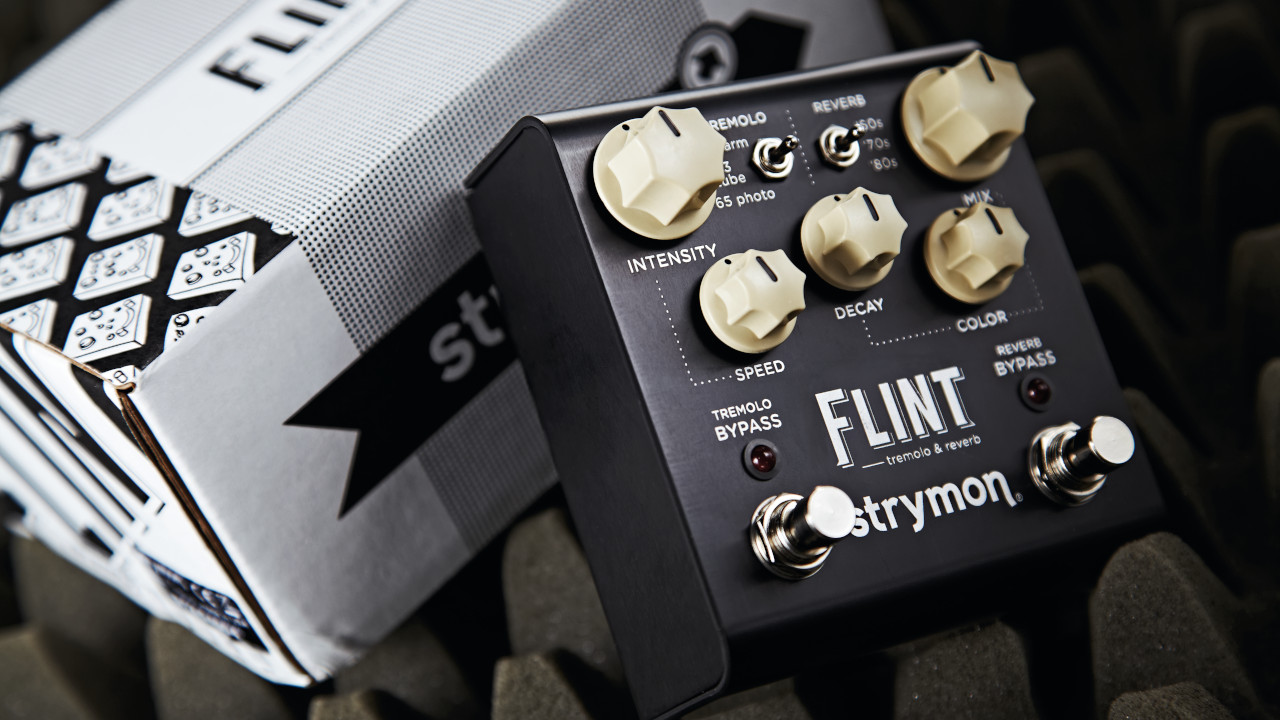
5. Strymon Flint Tremolo and Reverb
Our expert review:
Specifications
Reasons to buy
Reasons to avoid
✅ Buy if you want a pedal that combines both tremolo and reverb: Why buy two pedals when one will do?
❌ Avoid if you're a new acoustic player: The combo is a nice option to have, but tweaking the secondary functions is a bit of a pain.
Build quality rating: ★★★★
Usability rating: ★★★½
Sounds rating: ★★★★
Overall: ★★★★
Some pairings are just made for each other – red wine and chocolate, caramel and sea salt, tomato and mozzarella… Well, reverb and tremolo should be on that list too. Recognizing this, Strymon has brought us the Flint pedal, combining reverb and tremolo in a single unit.
Like many things guitar, these effects really took off in the ’50s (tremolo) and ’60s (reverb), which is why Strymon has served up half a dozen vintage flavors here. For reverb we get ’60s Spring Tank, ’70s Electronic Plate and ’80s Hall Rack, while the tremolo types are ’61 Harmonic, ’63 Power Tube and ’65 Photocell.
In essence, this means that the tremolo effect can roam from soothing to saturated to hard, while reverb goes from classic spring to densely reflected hall. If you're accustomed to the high quality of Strymon tones, then this acoustic guitar pedal won't disappoint.
We suspect that most acoustic guitar players will want to use a slow, smooth tremolo to add ambient depth to their sound, but the Flint is a gorgeous pedal to experiment with, so don't stop there.
Operation of the primary controls couldn't be easier but, like a few other Strymon pedals, adjusting the secondary functions is a bit of a faff. It's worth the trouble though, as combining the two effects is just lush.
Best chorus
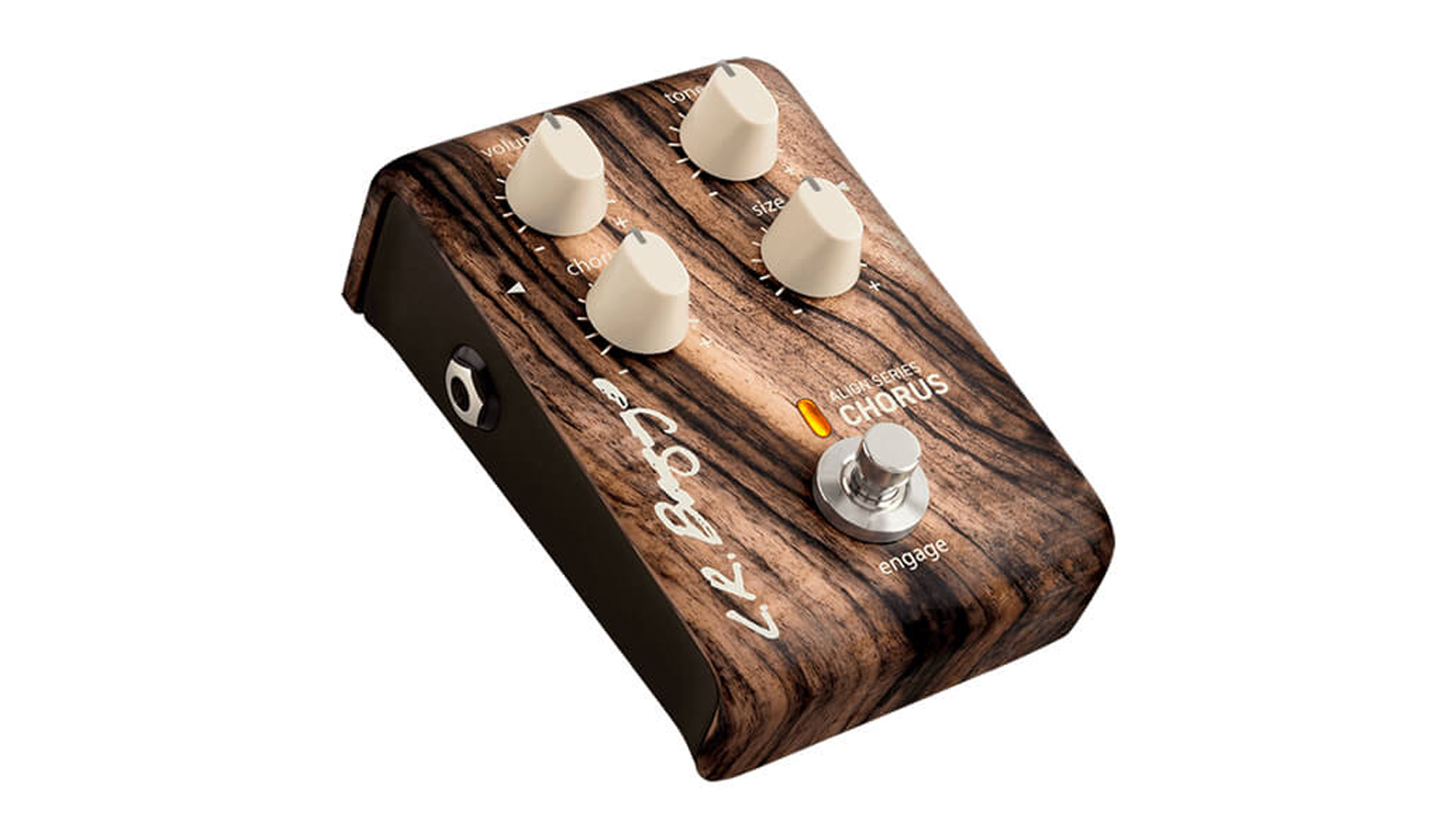
6. LR Baggs Align Chorus Pedal
Our expert review:
Specifications
Reasons to buy
Reasons to avoid
✅ Buy if you want an easy to use chorus pedal: LR Baggs Align series are excellent choices for acoustic players, and this chorus pedal is a great buy with plenty of depth.
❌ Avoid if you're looking to add more drama to your playing: This pedal offers more subtle sounds so it might not suit all your needs.
Build quality rating: ★★★★
Usability rating: ★★★★
Sounds rating: ★★★★
Overall: ★★★★
LR Baggs has voiced its Align chorus pedal to suit the 'less is more' crowd. So if your idea of choral heaven is subtle tones that massage your sound with depth, while simultaneously showering it with celestial ambiance, then this is the best acoustic guitar pedal for you.
It’s very easy to sculpt a great acoustic sound from the LR Baggs Align Chorus Pedal. The chorus knob acts like a wet/dry control, so you can dial in as much of the effect as you like while keeping your original guitar tone intact.
The size knob changes the intensity of the chorus from very subtle to subtly unsubtle. Turning it clockwise intensifies the way in which two chorus voices interact; it’s a little like adding more instruments to the mix. All very usable tones.
The tone knob only affects the wet sound, leaving your original guitar tone pristine, but the volume knob does change the overall volume, meaning this pedal can also be used as a slight boost.
LR Baggs has developed an entire range of effects boxes under the Align banner, all voiced for acoustic guitar. They’re well worth checking out.
Best phaser
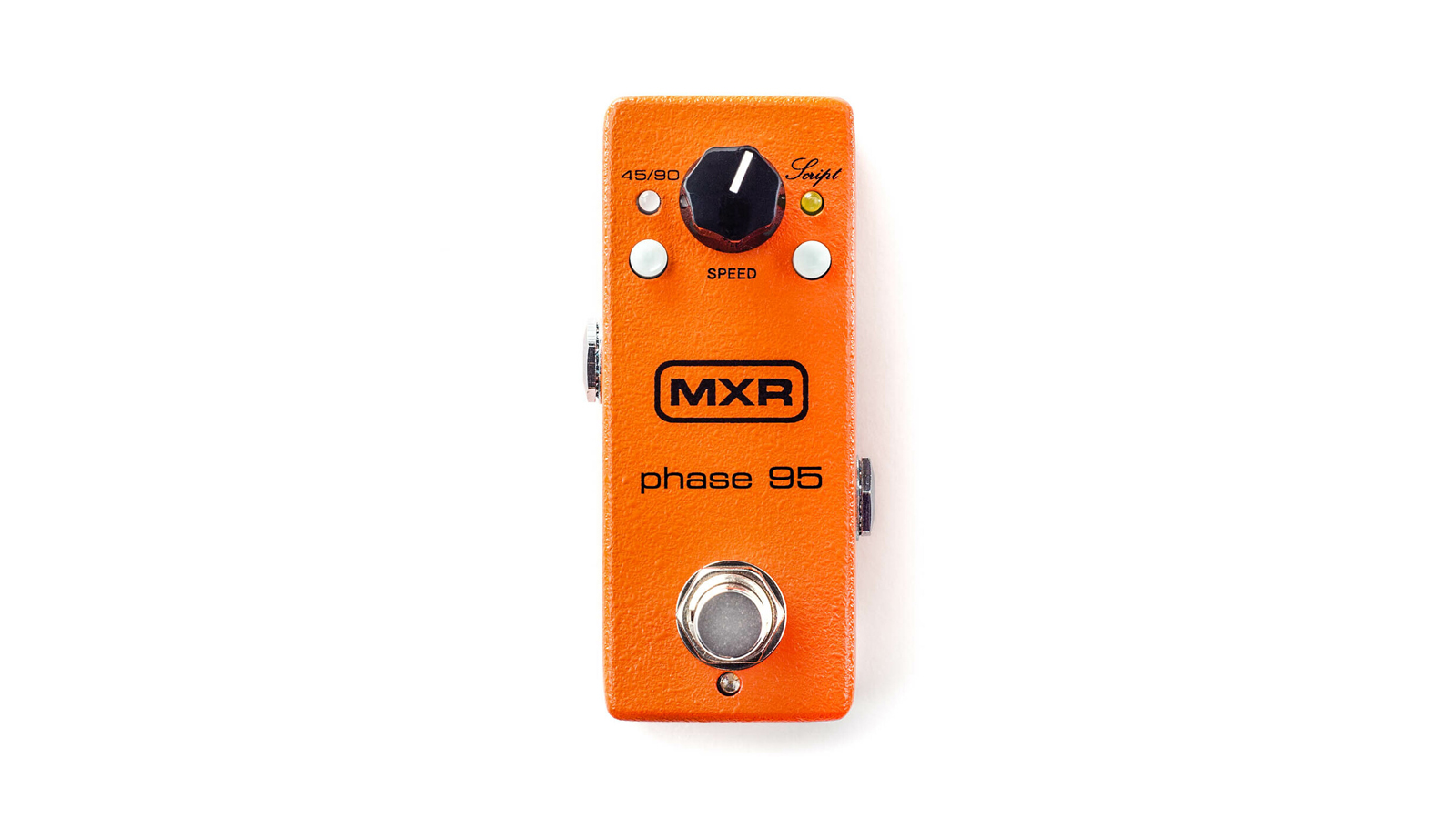
7. MXR Phase 95
Our expert review:
Specifications
Reasons to buy
Reasons to avoid
✅ Buy if you two phaser pedals for the price of one: The MXR Phase 95 combines the Phase 90 and Phase 45 into one neat, affordable package.
❌ Avoid if you just want the simplicity of having one phaser effect: You could just opt for either the 90 or 45, but for the price, it's hard to argue against the 95.
Build quality rating: ★★★★½
Usability rating: ★★★★½
Sounds rating: ★★★★½
Overall: ★★★★½
Here you get two classic MXR phaser pedals for little more than the price of one. A no brainer, right? The MXR Phase 95 combines two very popular phase effects boxes in one tiny enclosure: the Phase 90 and Phase 45.
The Phase 90 is MXR's four-stage phaser capable of some very intense, deep phase tones. It's definitely useful to have on your pedalboard, but of more interest to acoustic guitar players is the two-stage Phase 45, which sounds mellower and more syrupy.
With the Script voicing switch engaged, it enhances the effect further, producing warm and lush uni-vibe-like swirls.
Apart from the 45/90 selector and Script voicing switch, there's only the speed control for you to play with so it couldn't be easier to use. Why not just buy a Phase 45?
Frankly, having the additional Phase 90 bolsters your sound palette for the cost of a cup of coffee and some cookies. It would be silly not to.
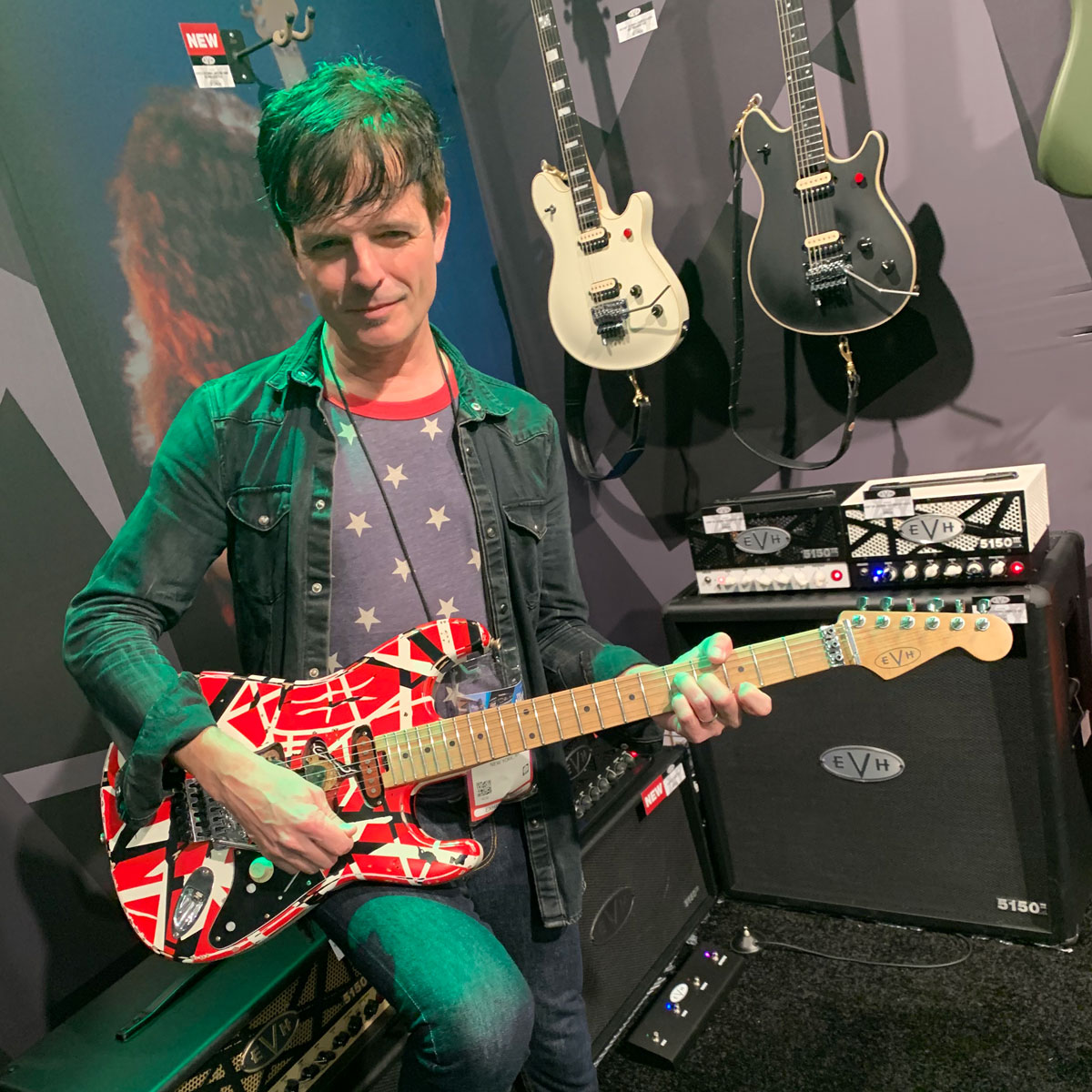
"It’s not a question of if but when you should put the MXR Phase 95 on to your existing pedalboard for some of the greatest hits in lush phase sounds in a mini pedal."
Read more: MXR Phase 95 review
Best for tone

8. TC Electronic BodyRez
Our expert review:
Specifications
Reasons to buy
Reasons to avoid
✅ Buy if you want to soften acoustic harshness: The TC Electronic BodyRez helpes make your acoustic sound livelier and adds some depth.
❌ Avoid if you want more EQ control: The BodyRez is a neat bit of kit, but you won't be able to fine tune your EQ control.
Build quality rating: ★★★★
Usability rating: ★★★★
Sounds rating: ★★★★
Overall: ★★★★
Unfortunately, under-saddle piezo pickups are known for their tone-sapping qualities. Unplugged, your acoustic tone sounds rich and warm with a sparkly top end, but as soon as you're hooked up to an amp or PA you're left with a thin, quacky, synthetic sound that's barely a shadow of its former self.
The BodyRez aims to restore your lost tone through the clever application of EQ filters and compression. This is all accomplished 'under the hood', so all you have to do is twist the big black Body knob until the right amount of tone is restored. Surprisingly, despite its diminutive size and simple controls, it works very well.
There's also a phase control to kill low-frequency feedback. If you’re looking for one of the best acoustic guitar pedals for breathing new life back into your tone, here it is.

"The pedal gave my acoustic a rich warmth I’d never heard before, which made me wonder how the hell I lived without this pedal."
Read more: TC Electronic BodyRez review
Best overdrive
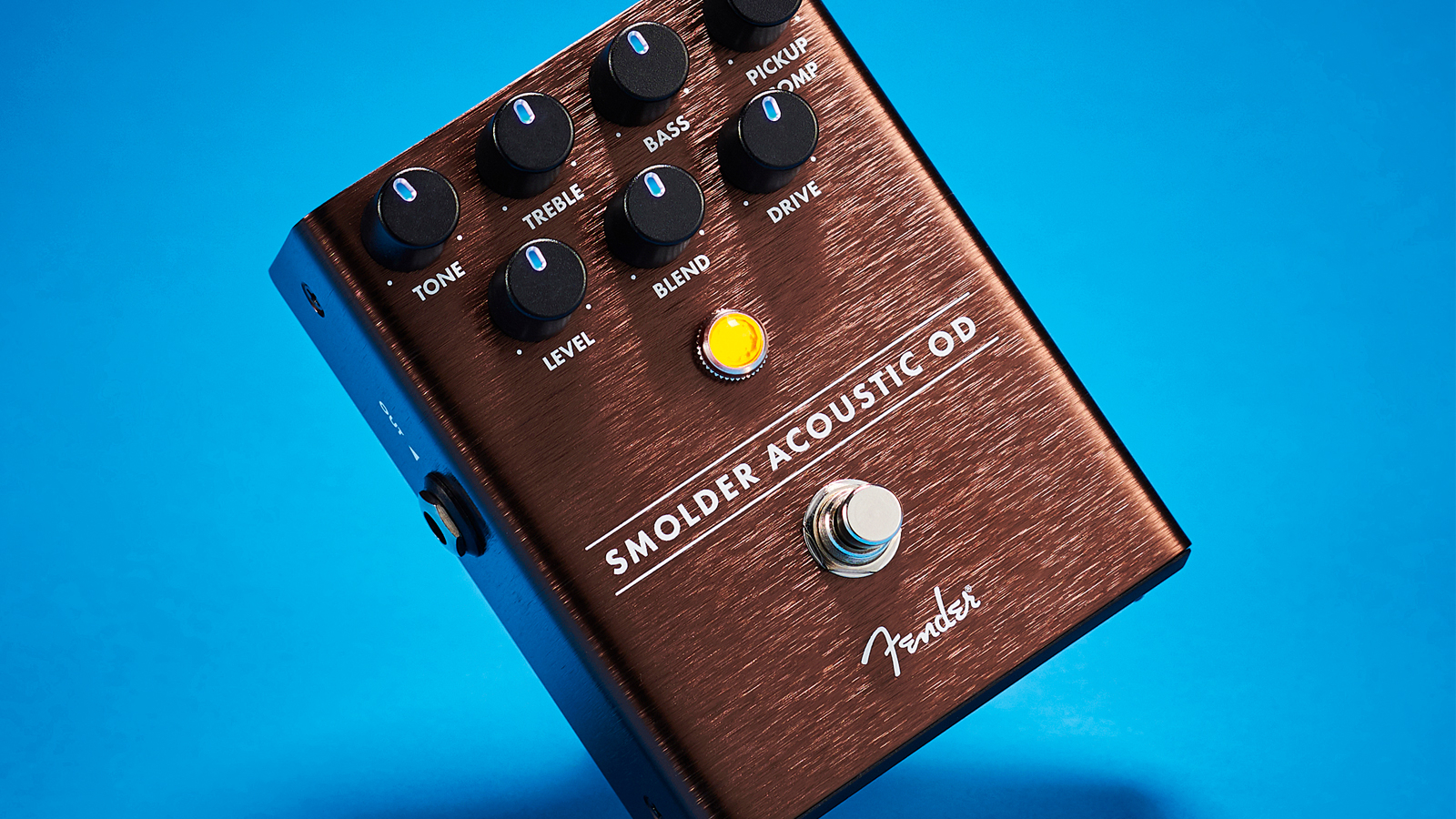
Specifications
Reasons to buy
Reasons to avoid
✅ Buy if you want to add something different to your acoustic tone: Using the Smolder's blend control allows you to add a gritty, harder edge to your playing.
❌ Avoid if you want to steer clear of any sort of overdrive: Not every acoustic player wants overdrive, so look elsewhere for your pedal needs.
Build quality rating: ★★★★½
Usability rating: ★★★★
Sounds rating: ★★★★½
Overall: ★★★★½
There are many valid reasons why you may never want an overdrive pedal anywhere near your acoustic guitar. But, if that pedal is a Smolder OD, then there are plenty of good reasons why you should.
Play a piezo pup, which has a lot of top and bottom end, through most overdrive pedals and all you'll get is a lot of woofy bass and high frequency fizz. It'll sound pretty awful. Fender has overcome this issue by equipping the Smolder OD with a specially developed circuit that reshapes a piezo's tone to sound more like a magnetic pickup. In addition, it has armed this box with a pickup compensator control to remove a lot of that characteristic piezo harshness.
Still, even if it doesn't sound dreadful, why on earth would you want to play your acoustic through an overdrive? If you're performing a long set with multiple songs, then it can be a good idea to change up gear occasionally. After all, mimicking a driven electric guitar can elevate choruses and solos to a new level.
However, I think the Smolder OD is best used as a tone-shaping blues demon. Dial in a moderately saturated tone – one that's just breaking up – then use the blend control to influence the dry signal with a touch of wet. The original tone of your guitar will still shine through, but when you dig in you'll hear a gritty, saturated edge. The resulting sound is reminiscent of a vintage low-fi recorded blues tone from the ’30s or ’40s. It's just wonderful.

"Fender's brave move to make overdrive its first acoustic pedal pays off, with a hugely musical drive complemented by a powerful EQ section that's a tone sweetener in its own right."
Read more: Fender Smolder Acoustic OD review
Best budget
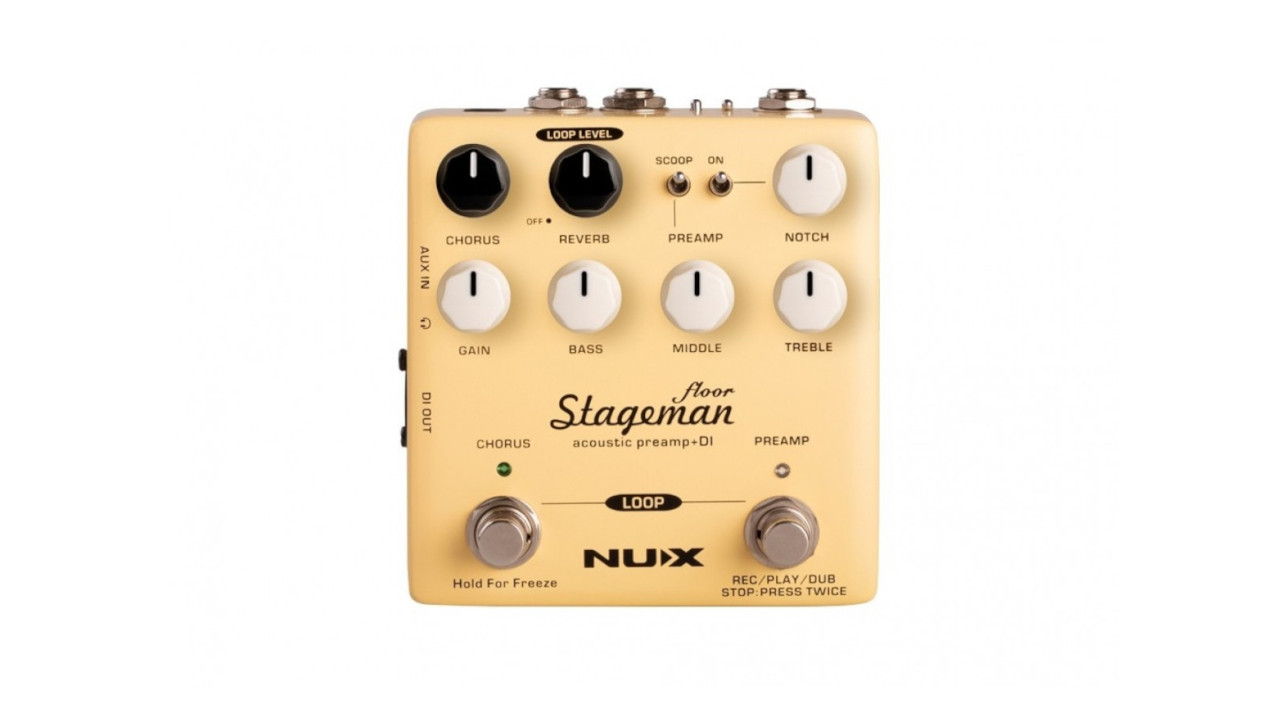
10. Nux NAP-5 Stageman Floor Acoustic Preamp
Our expert review:
Specifications
Reasons to buy
Reasons to avoid
✅ Buy if you want an affordable, jack of all trades pedal: With 3-band EQ, 60 second looper, DI and preamp with reverb and chorus built in, this pedal covers a lot of ground.
❌ Avoid if you just want a simple acoustic pedal: Many of the features won't be in your wheelhouse so better options are available.
Build quality rating: ★★★★½
Usability rating: ★★★★½
Sounds rating: ★★★★½
Overall: ★★★★½
This handy little pedal covers a lot of ground, and for not much money too. It has been designed to be an all-in-one solution for acoustic guitar players playing live with piezo or magnetic type pickups.
It’s a DI and preamp with reverb and chorus built in too. It’s really easy to use with just one knob for each effect, and you’ve got the option of introducing a bit of grit into your signal with the gain knob.
There’s a three band EQ for sculpting your tone, which is great for tweaking how your pickup sounds through various amps and PA systems, meaning you can always get the tone you’re after. There’s even a 60 second looper on there which allows you to get really creative.
If you’re looking for a jack of all trades without having to drop a ton of cash, then this is one of the best acoustic pedals you can get!
FAQ
Can I use electric guitar pedals with my acoustic?
You can use pretty much any guitar pedal with an acoustic, but it’s worth remembering that most non acoustic-specific pedals have been designed with an electric guitar in mind. That means that particular frequencies might not sound as good, as the pickups are designed quite differently.
Things like reverbs and delays are generally fairly interchangeable as most of them don’t affect the inherent tone too much, they add something on after a note has been played.
If you’re looking at adding a little crunch into your acoustic rig, then it’s definitely worth investing in something that has been designed specifically for an acoustic guitar to avoid everything sounding harsh.
Finding the best acoustic guitar pedal for you
You can trust Guitar World
When we think of effects we tend to picture vast pedalboards at the feet of electric guitar-wielding rock gods. However, pedals are just as valid for us acoustic guitar players. In fact, we'd go as far as to say that those designed to fix feedback and other live performance issues are an absolute must.
Many pedals originally developed for electric guitar work perfectly with acoustics, but some effects, such as overdrive, benefit from a more empathetic voicing. Fortunately, more and more brands are only too pleased to build pedals specifically voiced for acoustic guitar and we applaud that.
Generally speaking, acoustic guitar pedals fall into two camps. Pedals that provide essentia – and we don't use that word lightly – tone-shaping tools, and effects pedals that alter your tone for creative effect. Let's take a look at some examples now…
Tone shaping/correcting/fixing
Amplifying an acoustic guitar is fraught with issues – thin, lacklustre sound, feedback and so on – but many, if not all, of these problems can easily be fixed with certain pedals. Here's a quick rundown of the most common kinds you'll encounter and what they do:
DI/Preamp Pedals
An acoustic guitar will usually produce a high impedance signal, whereas a mixer feeding into a PA system or something similar will require a low impedance signal. That’s where DI (direct input) boxes come in.
You can get simple DI boxes that convert your guitar’s signal into something better suited to a mixer, however you’ll quite commonly come across preamp pedals with a DI built in.
Preamp pedals tend to feature some tone-shaping features, like EQ or gain. These give you more ability to dial in a particular sound and offer greater control. Some might even have effects built in like reverb, making them a one-stop-shop for acoustic players.
Extended EQ options or things like ‘notch’ features as seen on some preamp pedals can help you eliminate feedback or other unwanted frequencies, making live performances much more plain-sailing.
Pedals for creative effect
These effects can alter your tone subtly, or change it dramatically. Most acoustic guitarists use them with delicacy to thicken-up or enrich their live sound, often in an effort to bring character to synthetic-sounding piezo pickups.
However, if you're playing long sets with an acoustic, adding a dramatic effect can add some much-needed interest to your performance. Does your audience really want to listen to the same guitar tone all evening? In all honesty, probably not. Kicking in a layer of effects for a chorus or solo can supercharge your stage presence.
EQ
I can't stress enough just how beneficial EQ controls are for acoustic guitar players. Acoustic guitar pickups – piezo or magnetic – have the impossible task of trying to replicate the sound of an acoustic. Acoustics sound as good as they do because our ears are hearing sound waves emitted from the entire soundbox of the guitar.
In contrast, piezo pups are picking up vibrations from a limited part of the guitar's top and/or bridge, and magnetic pickups are really just influenced by the strings. So, a lot of the natural richness of your unplugged tone will be missing.
EQ controls enable you to remove any offending frequencies with precision, while putting the good stuff back in. To an extent, EQ and preamp pedals perform some of the same duties. Instead of buying both, invest in a good preamp with decent EQ capabilities.
Reverb
We've all heard reverb, it occurs naturally in any space where there are surfaces for sound waves to reflect off. Closely related to Echo and Delay, this effect is produced when those reflections are tightly spaced. They hit our ears very shortly after the original sound and, because they are so close together, our brains register them as a single sound.
The larger the space, the longer it takes the reflections to reach our ears, and the less intense they become. That's why a small room sounds very different to a concert hall.
Reverb pedals may offer a variety of sonic flavours. Hall, Chamber and Room are pretty self-explanatory. They're usually added to guitar tones to make them more naturally airy.
Plate reverb sounds less room-like, instead brighter, shimmering and dense. Spring reverb sounds, well, springy, bouncy and much darker. Both Plate and Spring are often used to add character to a sound.
Delay
Where reverb relies on sound reflections that are tightly spaced, delay needs them to be, well, delayed. Space signals out by about 30 milliseconds or more and our brain begins to hear them as separate sounds, unlike reverb, which we sense as one continuous sound.
This means that delay is usually used to repeat notes for creative effect, rather than for mimicking room ambiance. However, that's underselling delay by some margin. There are many, many different types of delay available including digital, tape, reverse, dual and much more.
Sophisticated pedals, such as the Boss DD-500 or Strymon Timeline, feature many of these variations, enabling them to achieve anything from subtle rhythmic repeats to huge walls of lush ambient texture. Marry a delay with a looper for hours of joyful noodling.
Tremolo
Tremolo is a modulation effect that changes the amplitude (volume) of your guitar over time. Think of Duane Eddy, playing his tremolo-soaked, twangy-style Gretsch, in the late ’50s and you'll get the picture.
Don't worry, we're not suggesting you go full-out Duane with your Martin anytime soon. Instead try dialling in a really slow, smooth tremolo to add more depth and body to your amplified sound.
Tremolo is often confused with vibrato because Fender used the two words interchangeably for decades. Instead of changing volume, vibrato is an effect that changes pitch over time. The two effects sound completely different, but both are worth experimenting with.
Chorus
Chorus works by converging two or more almost identical sounds that differ only in a slight variation in pitch. Our brains process the resulting sound as a subtle spread of instruments or voices, much like a choir. Chorus is loved by acoustic guitarists for its rich shimmering quality.
Phaser
As the name suggests, a phaser is the sound of two identical signals moving in and out of phase over time. This continuously cancels out and reintroduces various frequencies, giving a whooshing effect – at extreme settings it can sound like a screaming jet engine passing overhead.
More subtle settings will, once again, thicken up your amplified sound, but this time with smooth, ethereal, ambient swirl and whirl. It's not an effect you'll want to overuse, but it will add a cool dimension to your sound if used sparingly. Flangers work in a similar way to Phasers, so give this effect a try too.
Overdrive
If there's one effect that brings out the haters, it's overdrive. And for good reason too: done badly it can sound dreadful. Saturating an acoustic guitar tone can make the bottom end muddy and the high end fizz – not a good start.
That's why a pedal like Fender's Smolder OD is a revelation. It's voiced specially for the acoustic guitar, so the murk and fizzle has been filtered out. You can also blend the wet and dry signals, which enables you to retain your original tone but with an added saturated edge – amazing for low-fi vintage blues tones.
Good overdrive pedals will also enable you to simulate electric guitar tones on your acoustic to add interest for choruses and other upbeat sections of your performance.
Compression
Nothing divides opinion among acoustic players more than compression. Some players claim a compressor is a vital bit of kit, sorely needed to bring out the very best in your playing. Others warn it's going to kill your dynamics stone dead. Both camps make valid points.
Essentially, a compressor is used to compress your sound's dynamic range, making the loud bits sound quieter and the quiet bits sound louder. In the right hands, this can even out your sound, increase sustain, add depth to the midrange, bring out sparkle in the top end and make your playing sound more articulate.
However, too much squeeze will rob your playing of all its dynamics, which is the combination of purposefully soft and loud notes to add interest, character and emotion to a piece. So, go careful. Compressor pedals can be used as a boost too.
Looper
A looper does what it says on the tin: it loops previously played sections of your performance enabling you to play a new part on top. For example, you can lay down a groove, loop it and then improvise over the top.
Virtuoso guitarists use loopers to mimic the sound of multiple guitars to build layer upon layer of luxuriant ambient texture. The looper pedal is not an effect as such, but it's one of the very best to use for dramatic effect.
For loopy inspiration Ed Sheeran's playing springs to mind, but also take a gander at KT Tunstall (Black Horse and the Cherry Tree is classic looper fodder), Robert Fripp and Philip Keaggy.
If you're just starting out as a guitarist, a Looper pedal should be close to the top of your shopping list because they make incredibly useful practice tools. They're brilliant for building strong timing and improv skills.
Effects
While acoustic guitar players aren’t as known for utilizing effects as their electric counterparts, having a select few in an acoustic rig can work very nicely.
Reverb is really common, in fact; most examples of recorded acoustic guitar have some sort of reverb involved, so why not recreate that with a pedal?
Some players like the lush warble of chorus too. Depending on how it’s set, you can add an almost 12-string like quality to your sound which helps thicken everything up. You might want to experiment with delay, phaser or even gain as well – the only limitation is your imagination.
How we choose
At Guitar World, our team of experts has extensive experience playing and testing various guitar products, including a load of acoustic guitar pedals. As dedicated guitar enthusiasts, we understand the importance of achieving the right sound and tone, and we leverage our expertise gained from using these products in acoustic live performances, recording sessions, and rehearsals to identify the best pedals for our guides.
To curate this list, we combine practical experience, user feedback, and in-depth discussions with our editorial team to reach a consensus. We take into account factors such as pricing, features, ease of use, and durability to ensure that we showcase the very best products available on the market.
As guitar players ourselves, we appreciate the value of having the right equipment to create the perfect sound. Therefore, we are committed to providing reliable and knowledgeable recommendations to help guitar players find the ideal looper pedal to suit their specific needs and preferences. Our ultimate aim is to assist guitar players in unlocking their full potential by elevating their sound with the best guitar gear out there.
Find out more about how we make our recommendations and how we test each of the products in our buyer's guides.
Why you can trust us
☑️ A global audience of 3.8 million guitarists monthly
☑️ 1,200+ reviews on GuitarWorld.com
☑️ 30+ years of product testing at Guitar World
Guitar World boasts more than 44 years of expertise and stands as the ultimate authority on all things related to guitars. The magazine and website feature expertly written gear round-ups and top-quality, authoritative reviews penned by a team of highly experienced industry professionals.
Guitar World's inaugural print issue hit the shelves in July 1980, and ever since, it has been captivating players and enthusiasts with engaging lessons, insightful interviews with the biggest guitar heroes, and priceless buying advice for newbie players.
Furthermore, GuitarWorld.com continues this legacy online and serves as the hub of the world's foremost authorities on guitar playing. The site not only hosts content from Guitar World but also showcases articles from respected publications such as Guitarist, Total Guitar, Guitar Techniques, and Bass Player. With a reach extending to 3.8 million players each month, GuitarWorld.com is a go-to destination for guitar fanatics globally.
Meet the expert

After spending a decade in music retail, Richard is now a freelance writer for MusicRadar, Guitar Player, Guitar World and Reverb, specialising in electric and acoustic guitars, bass, and almost anything else you can make a tune with. When his head’s not buried in the best of modern and vintage gear, Richard runs a small company helping musicians with songwriting, production and performance, and plays bass in an alt-rock band. Otherwise, you'll probably find him out walking the dog!
Latest updates
06/11/25: The guide has been updated to include two new products: Fishman AFX Acoustiverb and Nux NAP-5 Stageman Floor Acoustic Preamp. Three picks from the list have been highlighted at the top of the page, while each of the 10 product entries now include "At a glance" boxes and star ratings. Expert verdict panels have been added where applicable and the FAQ section has been updated and expanded. The guide now includes a section on how we choose products and an entry on why you can trust the Guitar World team. An author bio has also been included.
Read more
- Supercharge your sound with the best guitar tuners around
- Get started with the best acoustic guitars for beginners
- On a budget? These are the best acoustic guitars under $500
- The best classical guitars: nylon-string guitars for every budget
- Plug in and play loud with of the best acoustic guitar amps
All the latest guitar news, interviews, lessons, reviews, deals and more, direct to your inbox!
After spending a decade in music retail, I’m now a freelance writer for Guitar World, MusicRadar, Guitar Player and Reverb, specialising in electric and acoustic guitars, bass, and almost anything else you can make a tune with. When my head’s not buried in the best of modern and vintage gear, I run a small company helping musicians with songwriting, production and performance, and I play bass in an alt-rock band.

